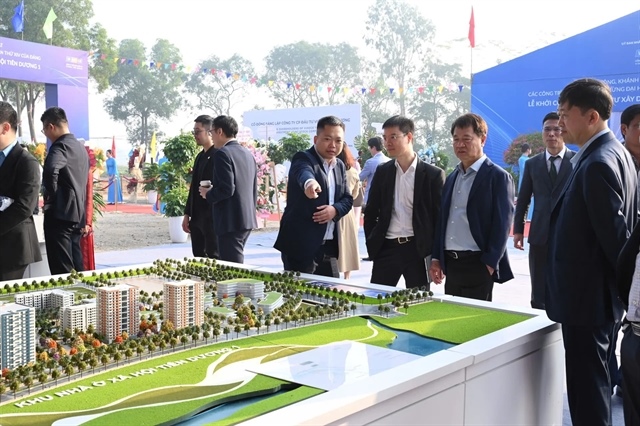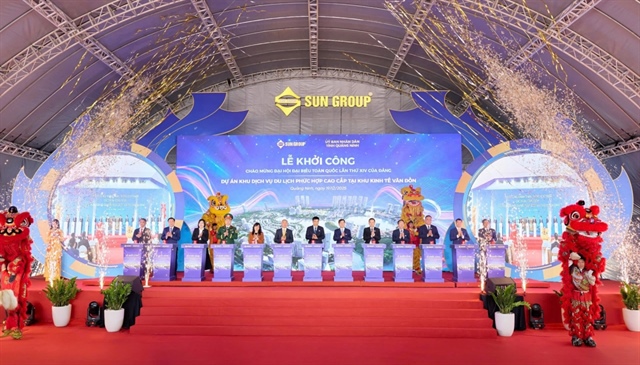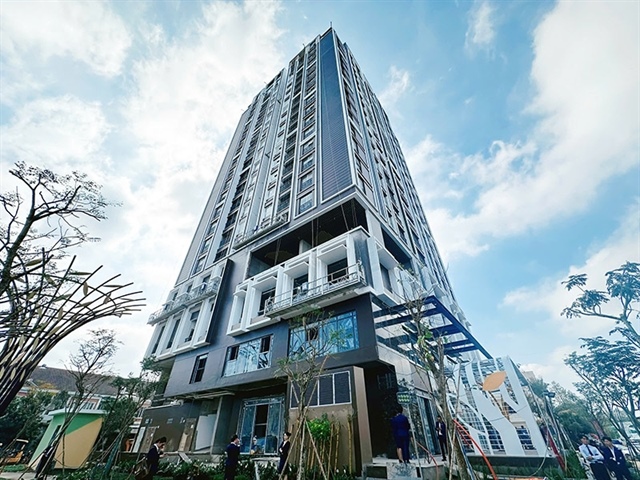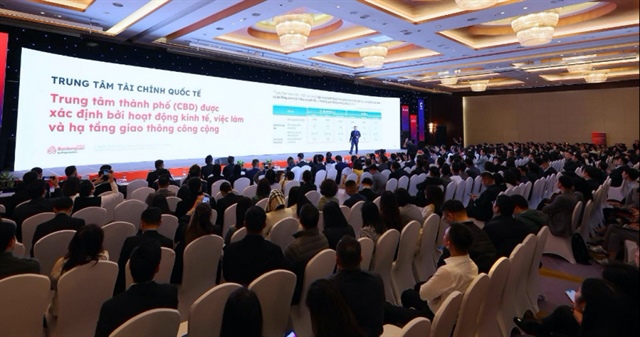Fears of a property bubble unfounded
Fears of a property bubble unfounded
Property-oriented credit jumped 26 per cent last year, triggering concerns from the State Bank, which is considering putting the brakes on credit growth. Dr. Le Xuan Nghia, former deputy chairman of the National Financial Supervisory Commission and head of the Business Development Institute, explains why it might not be a smart move to tighten credit flow into the real estate sector.
The massive rush by banks to finance property has worried the State Bank of Vietnam (SBV), which recently issued a warning about avoiding another real estate credit tragedy. What’s behind this concern?
To put the market, property investors, and people’s minds at ease, policy-makers should not look at different phenomena separately, but should take a more holistic view and see events in their proper context.
Since 2005, the real estate market has undergone two upsurges (2005-2007 and 2015-2016), which took place in different circumstances.
The following factors therefore should be taken into account:
First, from 2005-2007, the real estate market rallied and grew robustly as Vietnam was on the threshold of joining the World Trade Organization. At that time, domestic and foreign investors were overly optimistic about Vietnam’s prospects, leading to booming investment growth in trade, tourism, and also in the real estate market.
Similarly, in 2015, the property market rebound came after Vietnam signed a raft of free trade agreements (FTAs). Foreign investors’ sentiment, however, has remained at a moderate level. They are proceeding to invest here with more caution, as their understanding of Vietnam has markedly improved.
Second, credit grew rapidly (at above 30 per cent) from 2005-2007, whereas in 2015 it expanded moderately, at 15-17 per cent, within the limit suggested by the International Monetary Fund.
Third, in between 2005-2007 Vietnam witnessed its first wave of foreign direct investment (FDI), with a sharp (but unsustainable) growth in capital volumes. FDI volume rose phenomenally (setting an $80 billion record), but disbursed volume was a mere $8-9 billion on account of poor infrastructure conditions and economic institution complexity.
Meanwhile, the period starting in 2015 is seeing a second wave of FDI in Vietnam, but this FDI is more sustainable, as there is not much difference between committed and disbursed FDI volumes.
Fourth, inflation was deemed as “explosive” during 2005-2007, and in fact did explode in 2008, setting off a crisis in the macro-economy. Currently, inflation remains at a low level and is well under control. The macro-economy is stable, with long-term growth expected.
Fifth, bank interest rose sharply during the 2005-2007 period, undermining firms’ investment and business efficiency in addition to increasing costs. The market was driven by speculation. Currently, bank interest is fairly stable, which ensures effective business operations and investment. Interest may increase, but only moderately.
Sixth, from 2005-2007 there was a boom in market demand, particularly in the real estate sector, whereas presently the demand is feeble and is rebounding slowly.
Seventh, the first wave of urbanisation took place from 2005-2007 in the backdrop of a backward and unstable infrastructure system, whereas the current ongoing second wave of urbanisation benefits from better and more sustainable infrastructure, with millions of labourers moving from rural areas to big cities, and tens of thousands of foreigners expected to come to Vietnam following the enforcement of the Trans-Pacific Partnership (TPP) agreement.
Eighth, the 2005-2007 pperiod was the tail end of a long-term development cycle that began in the aftermath of a regional financial downturn (1997-1998), whereas the current period is the first stage of a long-term development cycle in the wake of a global economic slump.
The current property market revival may have a more stable footing, but the market’s reliance on credit is common to both development periods. Does this signify a high level of risk?
Vietnam is not unique in this case. The real estate market is largely reliant on bank capital in many countries all across the globe, for both house builders and home buyers.
In the US, for instance, trade and industrial groups don’t rely as heavily on credit from banks, whereas real estate groups source most of their capital from bank loans. It is because the real estate business requires enormous capital volumes and also because real estate firms are rarely listed on stock exchanges. American citizens almost always use bank loans to buy houses, and use their own money to invest elsewhere for higher profits.
The SBV intends to amend their Circular 36/2014/TT-NHNN to reduce the ratio of short-term funds used for providing medium- and long-term loans, and raise the risk-weight ratio of loans granted to finance the real estate and securities sectors from 150 per cent to 250 per cent. Is this possibly a hasty move?
To deliver a warning to banks and the market, the risk-weight ratio can be scaled up to 200 per cent. The 250 per cent ratio would be the highest worldwide. There would be no more room for adjustment in a later period.
In my view, tightening the credit flow at this point is somewhat hasty, as the market needs a more lasting policy framework. To support the economy and the property market rebound, monetary polices should be moderately loosened, coupled with a strategic vision to stabilise the interest rate as well as setting forth solid plans to manage the exchange rate.
Tightening credit could push up the interest rate. Once the interest rate goes up, all of our efforts to recover businesses’ health, grow the economy, and restructure the banking system might fail.
Residents and developers alike are worried that the real estate market might drop if the SBV decides to tighten credit flow. What will the market do in this scenario?
Policies must be based on careful calculations to avoid hurting the market. We have developed a predictive model for real estate market developments. The model shows that if the TPP impacts are taken into account, supply and demand in the property market would balance by 2018 (at present, supply exceeds demand), and demand should outstrip supply from 2019 onwards.
On account of the TPP, about 2.5-3 million people in rural areas will move to cities, and tens of thousands of foreign employees will come to Vietnam to find jobs, leading to a jump in housing demand across all market segments.
After 2019, supply may decrease against rising demand because of increasingly depleted land resources coupled with investors’ finite financial capacity. Several months ago, we predicted rapid growth in the real estate market by 2023. Our most recent estimates, however, show that this growth momentum may arrive sooner, possibly starting in 2021. In addition, if the market is in the doldrums, it could be extremely difficult for us to tackle bad debts.






















